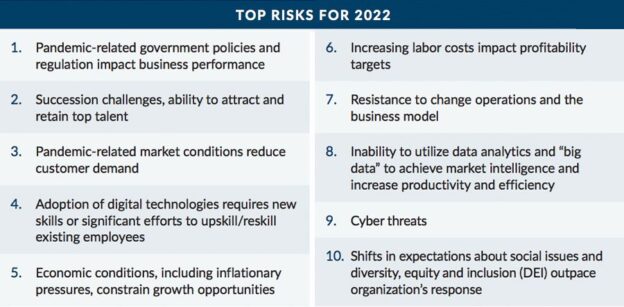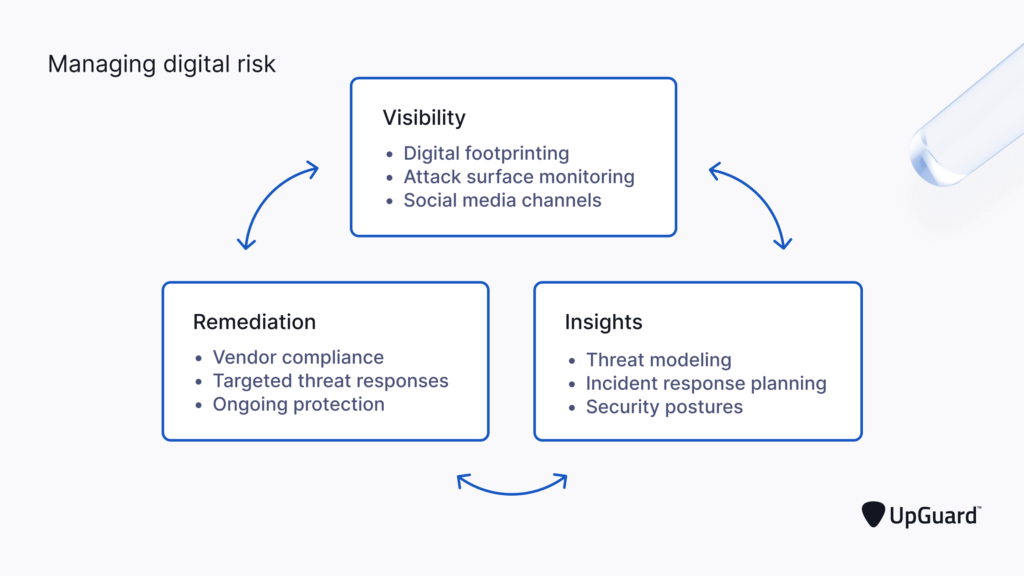So you’re curious about the biggest risks that come with digital transformation. Well, let’s dive right in. Digital transformation has undoubtedly revolutionized the way businesses operate, but it also comes with its fair share of risks. From cybersecurity threats to resistance from employees, there are several factors that can hinder the success of a digital transformation journey. In this article, we’ll explore some of the major risks that organizations need to be aware of when embarking on a digital transformation initiative.

Data Security Risks
Cyber attacks
One of the biggest risks in digital transformation is the increasing threat of cyber attacks. As organizations become more reliant on technology, they also become more exposed to potential security breaches. Cybercriminals are constantly evolving their techniques, making it challenging for businesses to keep up with the latest security measures. Without robust cybersecurity protocols in place, companies can fall victim to attacks such as malware, phishing, ransomware, or even data theft.
Data breaches
Linked closely to cyber attacks, data breaches pose a significant risk in the era of digital transformation. Companies today store vast amounts of sensitive information, including customer data, intellectual property, and proprietary business data. If effective data protection measures are not in place, this valuable information becomes vulnerable to unauthorized access or theft. Data breaches can result in severe financial losses, damage to brand reputation, and legal consequences.
Insider threats
While external threats like cyber attacks draw significant attention, organizations also need to be wary of insider threats. These threats may arise from disgruntled employees, contractors, or unintentional mistakes. Insiders who have access to sensitive information can potentially abuse their privileges, leak data, or inadvertently introduce security vulnerabilities. It is crucial for organizations to have robust internal controls and monitoring systems to detect and mitigate insider risks.
Lack of Digital Skills
Skills gap
Digital transformation relies heavily on the expertise and skills of professionals who can leverage technology to drive business outcomes. However, many organizations face a significant skills gap in their workforce. The rapid pace of technological advancements requires employees to continually update their skills. Without the necessary digital skills, organizations may struggle to implement and optimize new technologies, hindering their ability to compete in the digital landscape.
Resistance to change
Another risk in digital transformation is resistance to change. Introducing new technologies and ways of working can disrupt established routines and workflows, leading to resistance from employees. People may feel overwhelmed by the prospect of learning new skills or fear that technology will replace their roles. Overcoming resistance to change requires effective change management strategies, clear communication, and involvement of employees in the transformation process.
Lack of training programs
To address the digital skills gap and overcome resistance to change, organizations need to invest in comprehensive training programs. Unfortunately, many companies fail to provide adequate training opportunities to their employees. Without access to training programs, employees may struggle to acquire the necessary digital skills to navigate the digital landscape effectively. This can hinder the organization’s ability to adopt new technologies and fully leverage their potential.
Inadequate Infrastructure
Outdated technology
Outdated technology poses a significant risk in digital transformation efforts. Legacy systems and outdated software may not have the capabilities required to support new technologies or integrate with modern systems. Using outdated technology can lead to inefficiencies, security vulnerabilities, and limitations in scalability. Organizations must invest in updating their technology infrastructure to ensure it aligns with their digital transformation goals.
Legacy systems integration
A common challenge in digital transformation is integrating legacy systems with new technologies. Legacy systems are often built on outdated architectures that are not compatible with modern applications. Integrating these systems can be complex and time-consuming, requiring significant effort and resources. Failure to integrate legacy systems properly can result in data inconsistencies, delays, and disruptions to business operations.
Inefficient network infrastructure
Inadequate network infrastructure can hinder digital transformation initiatives. In the digital age, organizations rely on robust and efficient networks to support data transfer, communication, and collaboration. If the network infrastructure is outdated, slow, or unreliable, it can lead to delays, poor user experience, or even complete system failures. Investing in a robust network infrastructure is essential to ensure smooth digital operations and minimize disruptions.

Poor Change Management
Resistance from employees
Successful digital transformation requires a culture of change and agility. However, employees may resist the changes associated with digital transformation due to fear, uncertainty, or a lack of understanding. Resistance can manifest in various ways, such as passive resistance, active opposition, or lack of engagement. To mitigate this risk, organizations must address employee concerns, provide clear explanations of the benefits of transformation, and involve employees in the decision-making process.
Lack of clear communication
Communication plays a crucial role in ensuring successful change management during digital transformation. Lack of clear communication can lead to confusion, misunderstandings, and resistance. It is essential for organizations to have a well-defined communication plan that keeps employees informed about the transformation objectives, progress, and any changes affecting their roles or responsibilities. Transparent and timely communication builds trust and engagement among employees.
Ineffective project management
Digital transformation is often a complex and multifaceted endeavor involving multiple projects and initiatives. Ineffective project management practices increase the risk of project delays, cost overruns, and scope creep. Without proper project management, organizations may struggle to deliver transformational projects on time and within budget. Implementing robust project management methodologies, setting realistic goals, and ensuring clear accountability are essential for successful digital transformation.
Lack of Governance and Compliance
Non-compliance with regulations
In the era of digital transformation, data privacy and protection regulations are becoming more stringent. Failure to comply with these regulations can result in severe financial penalties and reputational damage. Many organizations face the challenge of understanding and adhering to complex regulatory requirements. Implementing effective governance frameworks and ensuring compliance with relevant regulations are essential for managing this risk.
Inadequate data protection policies
Organizations need robust data protection policies to address the risks associated with digital transformation. Inadequate policies can result in data breaches, unauthorized access, or misuse of sensitive information. It is crucial for organizations to have clear policies for data classification, access controls, encryption, and incident response. Regularly reviewing and updating these policies helps ensure they remain effective in addressing evolving security threats.
Lack of transparency and accountability
Digital transformation initiatives often involve multiple stakeholders and complex decision-making processes. Without clear transparency and accountability, organizations may struggle to ensure the successful implementation and governance of their transformation efforts. Lack of transparency can lead to confusion, delays, and conflicts, while inadequate accountability can hamper decision-making and hinder progress. Establishing transparent processes and clear lines of responsibility is essential for effective governance during digital transformation.
Vendor Lock-In
Dependency on a single vendor
Over-reliance on a single vendor can pose risks during digital transformation. If an organization depends on a single vendor for critical technology solutions, they become vulnerable to vendor-related risks such as price increases, service disruptions, or exit from the market. Vendor lock-in can limit flexibility and hinder the organization’s ability to adapt to changing needs or explore innovative solutions. Engaging multiple vendors or opting for open-source solutions can mitigate this risk.
Limited flexibility for future changes
Choosing technology solutions that lack scalability and flexibility can have long-term implications. Digital transformation is an ongoing process, and organizations need to adapt to changing business needs and emerging technologies. Technology solutions that are not future-proofed can require costly and time-consuming replacements or significant upgrades. Investing in scalable, modular solutions enables organizations to adapt and scale their digital initiatives as needed.
High switching costs
Switching from one technology solution to another can be a complex and costly process. High switching costs create a barrier to changing vendors or replacing technology solutions that no longer meet the organization’s needs. Organizations may feel locked into their existing technology, even if it becomes outdated or no longer delivers desired outcomes. Understanding the potential switching costs and carefully evaluating vendor contracts can help mitigate this risk.
Integration Challenges
Difficulties in integrating different systems
Digital transformation often involves integrating various systems and platforms to streamline operations and enable data-driven decision-making. However, integrating different systems can be a complex and challenging process. Incompatibilities between systems, data inconsistencies, and interoperability issues can arise, leading to delays, errors, or even system failures. Careful planning, thorough testing, and collaboration between IT teams and business units are essential to ensure successful system integration.
Data inconsistencies and duplication
System integration risks can also manifest as data inconsistencies or duplication. Poorly integrated systems may result in data discrepancies, making it challenging for organizations to have accurate, reliable, and unified information. Inconsistent data can lead to errors in reporting, decision-making, and planning, potentially impacting business outcomes. Implementing data governance practices and data validation procedures can help minimize the risks associated with data inconsistencies and duplication.
Complex system architecture
Digital transformation often involves the implementation of multiple systems, applications, and technologies. As a result, organizations may end up with a complex system architecture. A complex architecture can be challenging to manage, support, and maintain, increasing the risk of errors, performance issues, and security vulnerabilities. Striving for simplicity, standardization, and modular design principles can help reduce the complexity of the system architecture and minimize associated risks.
Strategic Misalignment
Lack of alignment between digital initiatives and business objectives
One of the significant risks in digital transformation is the lack of alignment between digital initiatives and the organization’s overall business objectives. Digital transformation should support and enhance the organization’s strategic goals. However, without clear alignment, organizations may invest in digital initiatives that do not contribute to business outcomes or fail to address key challenges. Regularly evaluating the alignment between digital initiatives and business objectives is crucial for optimizing the benefits of transformation.
Failure to prioritize investments
Digital transformation involves making strategic investments in technology, infrastructure, and resources. However, organizations may face the risk of improper prioritization of these investments. Failing to prioritize investments effectively can result in wasted resources, missed opportunities, or inadequate support for critical initiatives. Developing a prioritization framework based on business impact, return on investment, and strategic alignment helps ensure that resources are allocated to the most valuable projects.
Lack of a clear digital strategy
Digital transformation without a clear strategy is akin to sailing without a destination. Lack of a defined digital strategy increases the risk of pursuing fragmented initiatives, duplicating efforts, and failing to seize strategic opportunities. A clear strategy provides direction, guides decision-making, and aligns the organization’s efforts towards specific goals. Developing a comprehensive digital strategy, including goals, milestones, and performance indicators, is essential for successful digital transformation.
Budget Overruns
Underestimation of costs
Digital transformation initiatives can be costly, and underestimating the required budget is a significant risk. Failure to accurately estimate costs can lead to budget overruns, delayed projects, or incomplete implementations. Organizations must consider not only direct costs but also potential indirect costs associated with training, infrastructure upgrades, ongoing support, and maintenance. Conducting thorough cost estimations and allowing contingency budgets can help mitigate the risk of budget overruns.
Unplanned expenses
Digital transformation projects can be unpredictable, and unanticipated expenses can arise throughout the journey. These unplanned expenses can stem from unexpected technical challenges, compliance requirements, or scope changes. Without proper contingency planning, these expenses can strain the project budget, potentially leading to compromises in quality or reduced scope. Incorporating contingency plans and regularly revisiting the project budget can help manage unexpected expenses.
Scope creep
Scope creep refers to the tendency for a project’s scope to expand beyond its original boundaries. In digital transformation, scope creep can lead to increased costs, extended timelines, and compromised project objectives. Changes in requirements, stakeholder expectations, or emerging opportunities can contribute to scope creep. Establishing strong project governance, clearly defining project scope, and regularly reassessing project deliverables can help mitigate the risk of scope creep.
Operational Disruptions
Downtime and system failures
Digital transformation often involves replacing or upgrading key systems and infrastructure. During these changes, organizations face the risk of downtime and system failures. Downtime disrupts business operations, leading to lost productivity, revenue losses, and customer dissatisfaction. Robust planning, rigorous testing, and seamless transition strategies can help minimize operational disruptions and ensure smooth migration to new systems.
Process disruptions
Changes in technology and workflows during digital transformation can disrupt established processes. Employees may need to learn new procedures, adapt to changes in information flow, or integrate new tools into their daily tasks. Poorly managed process disruptions can lead to productivity declines, reduced employee morale, or delays in delivering products or services. Providing comprehensive training, involving employees in process redesign, and facilitating open communication channels can help minimize this risk.
Workflow bottlenecks
Digital transformation aims to streamline and improve business processes, but it can also introduce new bottlenecks and inefficiencies. Organizations need to identify and address workflow bottlenecks that hinder productivity and slow down operations. Analyzing and optimizing key processes, leveraging automation technologies, and regularly seeking feedback from employees can help identify and eliminate bottlenecks, enabling smoother operations in the digital landscape.
In conclusion, digital transformation brings numerous opportunities for organizations to stay competitive, improve operational efficiency, and deliver enhanced customer experiences. However, it also entails risks that must be carefully managed. From data security risks to challenges in skills, infrastructure, and change management, organizations need to be proactive in identifying and addressing these risks. By implementing robust cybersecurity measures, investing in upskilling programs, modernizing infrastructure, practicing effective change management, ensuring governance and compliance, carefully selecting vendors, addressing integration challenges, aligning digital initiatives with business objectives, managing budgets effectively, and minimizing operational disruptions, organizations can navigate the risks associated with digital transformation and unlock the potential for growth and success in the digital era.






